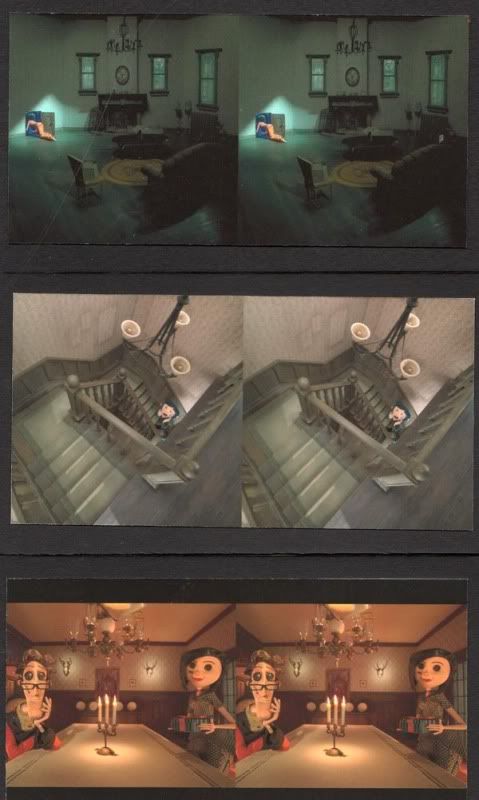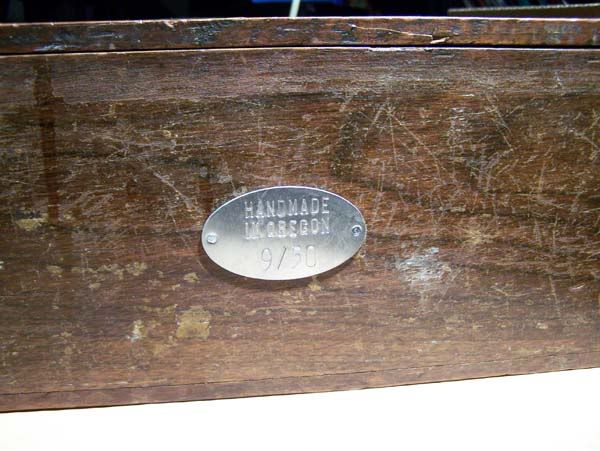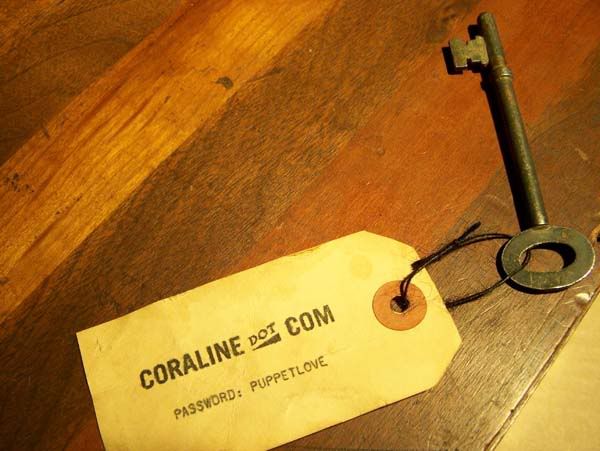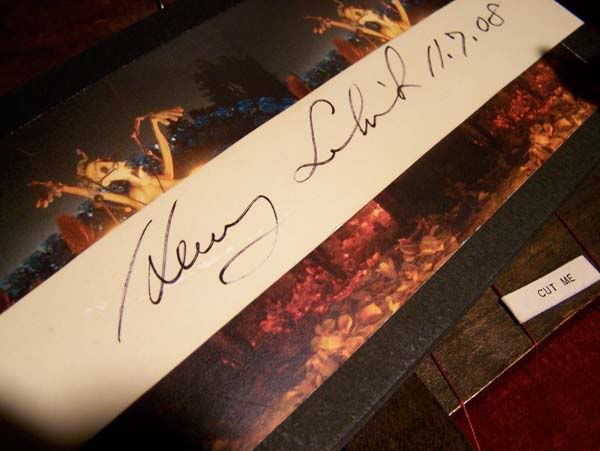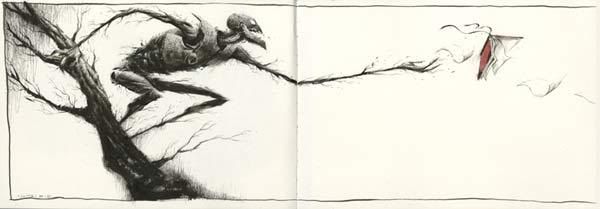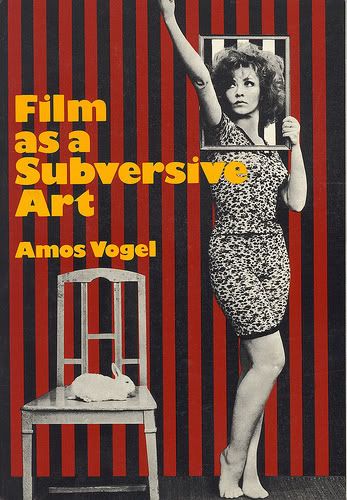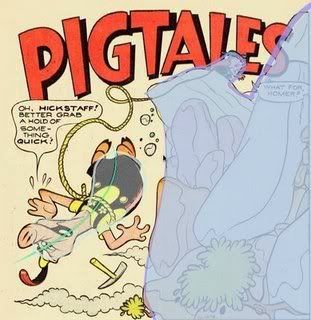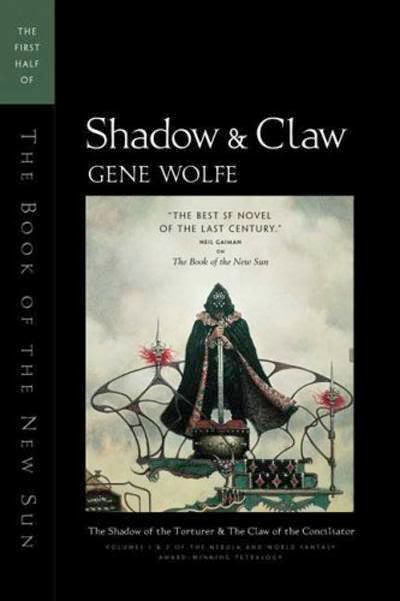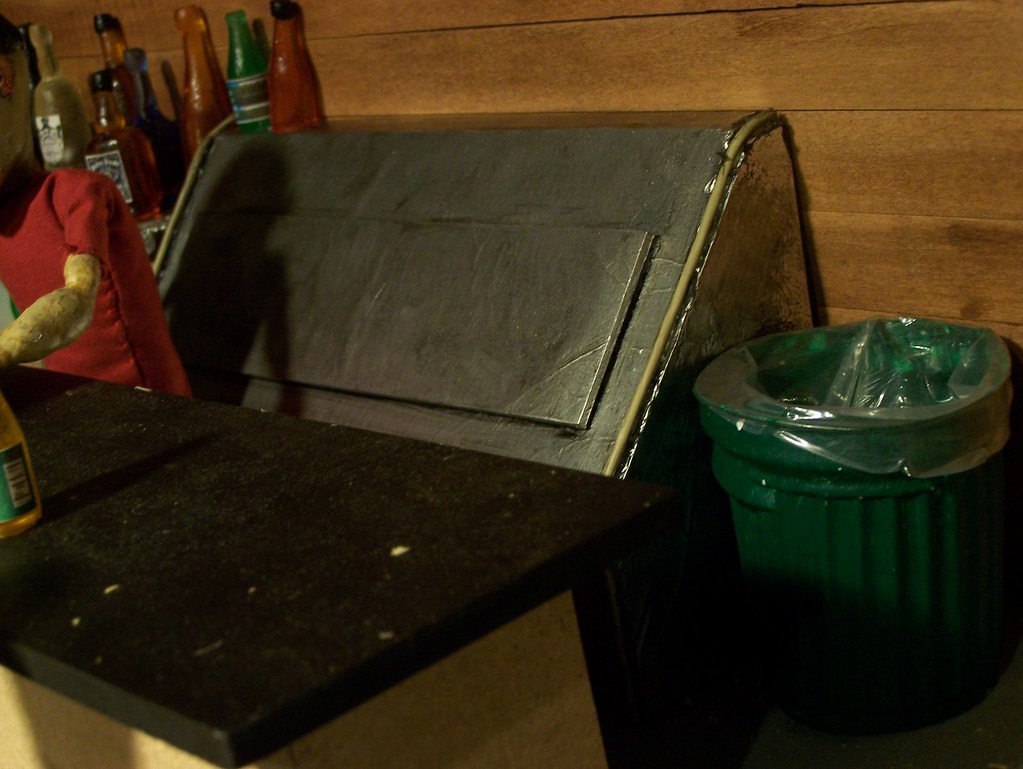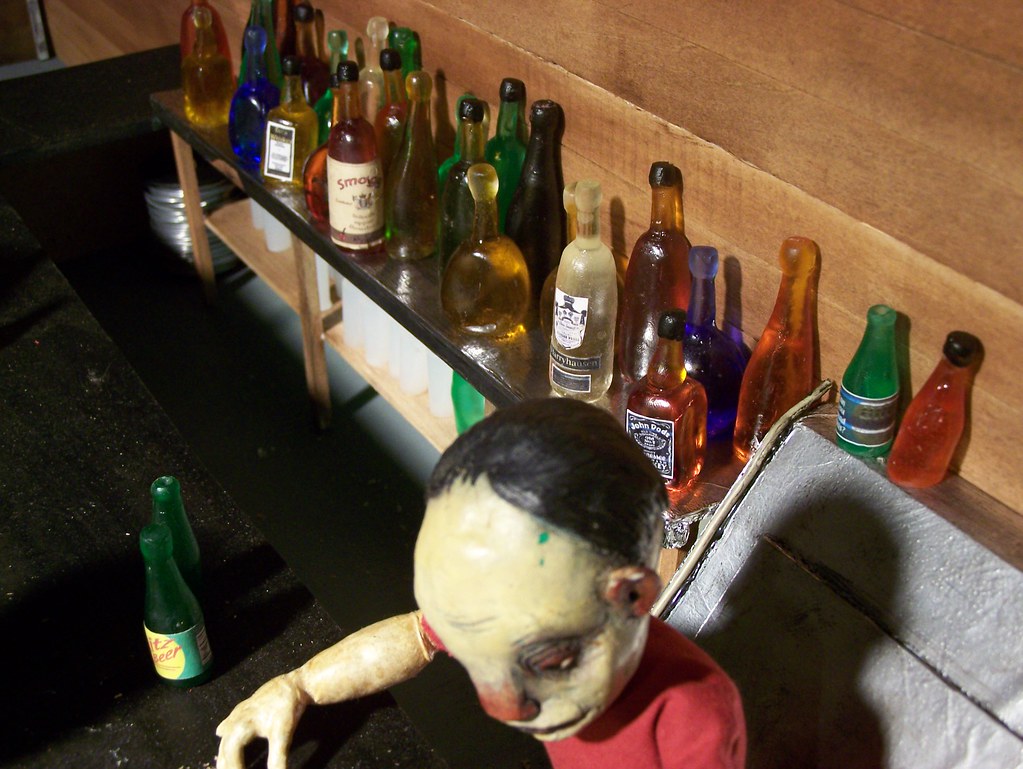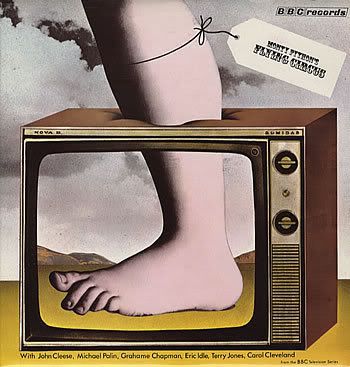
I want to post a few more quotes from Esslin's book before it completely fades from my short-termInUS MEmory bLanks. But first a little bit writ by me:
I watched a few of Beckett's plays - or parts of them anyway. There's a box set of DVDs called Beckett on Film available through Netflix for anyone interested. I found them for the most part to be unrelievedly dark and morbid (though Esslin says that many directors present the material that way when Beckett meant for it to be presented much more comically). I tried to watch some of Ionesco's plays (or the posted segments) on YouTube, but they all seem to be very amateurish high school productions taped by members of the audience bootleg style. Impossible to understand. I did find a clip on YouTube from a film of The Birthday Party (I forget who wrote it - Pinter perhaps?) that looks quite interesting. The DVD seems to be available only in R2 from overseas. So, from what I've seen thus far, it seems to me that the actual plays themselves are loaded with anguish and pain, obsessed with death and disease and loneliness and stupidity. Difficult stuff to watch for sure!!! But then, it does reflect the angst of the most sensitive artists in the terrible wake of destruction of WW2 - I suppose that's exactly what they were feeling at the time.
But, all that aside, I can take a lot of great ideas from Esslin's book. The darkness and morbidity needn't be included. Also, I realized that Theatre of the Absurd is basically just the extreme type of that certain trend of modern film consisting of French and Czech New Wave and Italian Neo-Realism.... namely the devaluation of plot and character in favor of a looser, less structured form.
Ok, following are some quotes I don't want to lose track of, so I've laboriously typed them out to post here. I particularly like the historical linking of different types of comedy throughout history leading up to TotA.
****************************************************************************
•It is a significant and somewhat paradoxical fact that the development of the psychological subjectivism that manifested itself in Strindberg's Expressionist dream plays was the direct and logical development of the movement that had led to naturalism.
It is the desire to represent reality - all of reality - that at first leads to the ruthlessly truthful description of surfaces, and then on to the realization that objective reality - surfaces - are only part, and a relatively unimportant part, of the real world.•James Joyce..... tried to capture the surface of the real world, until he decided that he wanted to record an even more total reality in Ulysses.
•Eugene Ionesco:
"I do not write plays to tell a story. The theatre cannot be epic... because it is dramatic. For me, a play does not consist in the description of the development of such a story --- that would be writing a
novel or a
film. A play is a
structure that consists of a
series of states of consciousness, or situations, which become intensified, grow more and more dense, then get entangled, either to be disentangled again or end in unbearable inextricability."
•Instead of proceeding logically Pinter's dialogue follows a line of associative thinking in which sound regularly prevails over sense. Yet Pinter denies that he is trying to present a case for man's inability to communicate with his fellows. 'I feel' he once said' that instead of any inability to communicate there is a
deliberate evasion of communication. Communication itself between people is so frightening that rather than do that there is continual cross-talk, a continual talking about other things, rather than what is at the root of their relationship. - People talking to fill the empty spaces between them.
•The Theatre of the Absurd is a return to old, even archaic traditions. The line from the
Mimus of antiquity, through the clowns and jesters of the middle ages and the Zanni and Arlecchini of the
Commedia dell'arte, emerges in the comedians of music hall and vaudeville from which the 20th century derived what will in all probability be regarded as its only great achievement in popular art -- the silent film comedy of the Keystone Cops, Charlie Chaplin, Buster Keaton, and a host of other immortal performers. The silent film comedy is without doubt one of the decisive influences on the Theatre of the Absurd. It has the dreamlike strangeness of a world seen from outside with the uncomprehending eyes of one cut off from reality. It has the quality of nightmare and displays a world in constant, and wholly purposeless, movement. And it repeatedly demonstrates the deep poetic power of wordless and purposeless action. The great performers of this cinema, Chaplin and Keaton, are the perfect embodiments of the stoicism of man when faced with a world of mechanical devices that have gone out of hand.
•The coming of sound in cinema killed the tempo and fantasy of that heroic age of comedy, but it opened the way for other aspects of the old vaudeville tradition. Laurel and Hardy, W C Fields, and the Marx Brothers also exercised their influence on the Theatre of the Absurd. Ionesco himself told the audience at the American premiere of
The Shepherd's Chameleon that the French Surrealists had "nourished" him but that the three biggest influences on his work had been Groucho, Chico, and Harpo Marx.
•With the speed of their reactions, their skill as musical clowns, Harpo's speechlessness, and the wild surrealism of their dialogue, the Marx Brothers clearly bridge the tradition between the
Commedia dell'arte and Vaudeville, on the one hand, and the Theatre of the Absurd on the other.
•The tradition of the
commedia dell'arte reappears in a number of other guises. Its characters have survived in the puppet theatre and the Punch and Judy shows, which also, in their own way, have influenced the writers of the Theatre of the Absurd.
•Another descendant of the
Mimus of antiquity was the court jester: the long stick he carries was the wooden sword of the comic actor of ancient times. And both clowns and court jesters appear in in the comic characters of Shakespeare's theatre. This is not the place for a detailed study of Shakespearean clowns, fools, and ruffians as forerunners for Theatre of the Absurd. Most of us are too familiar with Shakespeare to notice how rich his plays are in precisely the same type of inverted logical reasoning, false syllogism, free association and the poetry of real or feigned madness that we find in the plays of Ionesco, Beckett, and Pinter.
•"Delight in nonsense," says Freud in his study of the sources of the comic,"has its root in the feeling of freedom we enjoy when we are able to abandon the straitjacket of logic." At the time Freud wrote his essay, more than 50 years ago, he hastened to add that this delight "is covered up in serious life almost to the point of disappearance", so that he had to find evidence for it in the child's delight in stringing words together without having to bother about their meaning or logical order, and in the fooling of students in a state of alcoholic intoxication. It is certainly significant that today, when the need to be rational in "serious adult life" has become greater than ever, literature and the theatre are giving room in increasing measure to that liberation through nonsense which the stiff bourgeoise world of Vienna before the First World War would not admit in any guise.
•The literature of verbal nonsense expresses more than mere playfulness. In trying to burst the bounds of logic and language, it batters at the enclosing walls of the human condition itself. It is thus no coincidence that the greatest masters of English nonsense should have been a logician and mathematician; Lewis Carroll, and a naturalist, Edward Lear. These two fascinating writers offer infinite material for aesthetic, philosophical, and psychological inquiry. Both are great inventors of unheard-of creatures that receive their existence from their
names."









